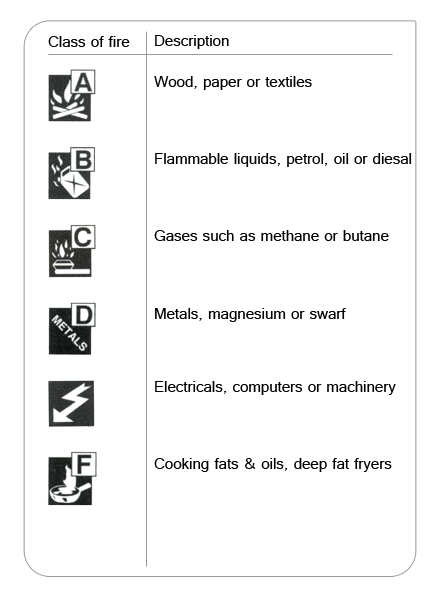|
 |
Fire Classes ExplainedIt can be confusing to choose the correct fire extinguishers needed. We have compiled a list of the fire classes below and the types of fire they relate to in order to help you select the correct products. If you require any help regarding the correct type of fire extinguisher needed please do not hesitate to contact us. |
- Fire Extinguishers
- Fire Alarm Panels
- Fire Blankets
- Safety Signs
- First Aid Kits
- Extinguisher Stands
- Shopping Basket



